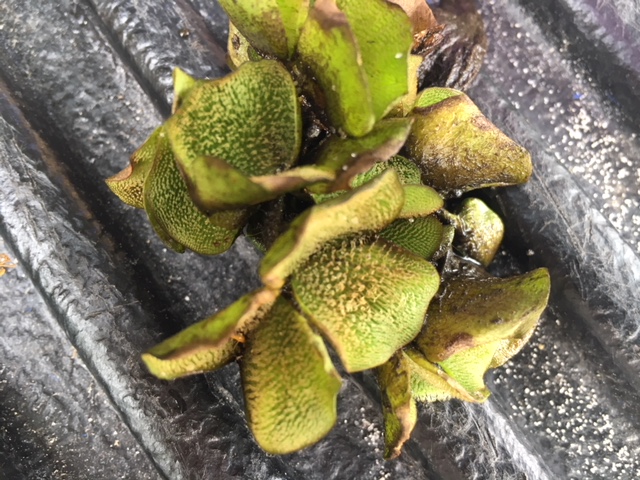EDRR Invasive Species
Giant Salvinia (Salvinia molesta)

Photo: Rick O’Connor
Define Invasive Species: must have ALL of the following –
- Is non-native to the area, in our case northwest Florida
- Introduced by humans, whether intentional or accidental
- Causing either an environmental or economic problem, possibly both
Define EDRR Species: Early Detection Rapid Response. These are species that are either –
- Not currently in the area, in our case the Six Rivers CISMA, but a potential threat
- In the area but in small numbers and could be eradicated
Native Range:
Giant salvinia is from southeastern Brazil and northern Argentina.
Introduction:
Intentionally brought here as an aquatic ornamental plant in the 1990s.
EDDMapS currently list 1,090 records of this plant. Most of those records are from a small location at the lower end of the Colorado River on the Arizona/California border. The remainder are scattered across the southeastern United States. There are 14 records in the state of Florida. Three in south Florida, 11 in north Florida and nine of those are from Escambia County. All records in Escambia County are from the Bayou Chico watershed. It is a freshwater plant and believed to have a low tolerance to saline waters. Though it may not be dispersed by drifting from one water body to another, it could be by wading birds or boats that move from one to another. It is used in the aquarium trade and could be released during tank cleanings.
Description:
The plant resembles the common “duckweed” often seen on ponds, but the elliptical leaves are larger – about 2cm in length. The leaves appear “hairy” and drift on the surface of the water with no roots. They grow in three’s, but the third leave often dangles beneath the water and looks like roots. The hairs on the top of the leaf are in groups of four and the tips touch each other resembling an egg-beater. These are hard to see with the naked eye, but a magnifying glass or photo on your phone and then enlarged will allow you to see this.
It likes slow moving, nutrient rich bodies of freshwater.
Issues and Impacts:
This plant grows very rapidly, spreading by vegetated fragments across the surface of the lake or pond it has infested. It forms dense mats on the surface and can block sunlight to submerged plants and grasses as well as aquatic life, lowering biodiversity. Usually inhabiting low energy ponds and lakes, the dead plant material will decompose drawing down on the amount of dissolved oxygen in the water and potentially causing a large fish kill. The large mats can also clog water intake pipes and, is a threat to hydroelectric dams, and – in some cases – even impede the movement of boats.
It is listed as a federal noxious weed but not a Florida one. It is however, on the Florida prohibited aquatic plant list.
Management:
Step one is to confirm identification. This can be done by contacting your local county extension office. For small amounts the plants can be removed by hand, possibly using a crab net or swimming pool debris skimmer net, and laying it out in the sun to dry. Once dead the plant can then be burned in your outdoor fire pit or bagged and disposed of in the trash.
For large infestations you will need to use a chemical spray. Spraying on a waterbody is very tricky and must be done by a certified person. In Florida, we recommend you contact your county extension office, or FWC (who is currently doing the chemical treatment). Chemical spraying does take multiple treatments and dead mats will drift across the waterbody as this process continues. We recommend you remove the dead mats to reduce the chance of decomposition and dissolved oxygen draw down. Dead mats can be bagged and disposed of with your trash.
We also recommend you report the plant to the national database. You can do this by visiting www.EDDMapS.org. You will need to sign in, but this is important for resource managers trying to track and manage this plant. If you have questions on how to do this, your county extension office can help.
For more information on this EDRR species, contact your local extension office.
References
Giant Salvinia. University of Florida IFAS Center for Aquatic and Invasive Plants.
Plant Management in Florida. Giant salvinia. University of Florida IFAS Center for Aquatic and Invasive Plants. https://plants.ifas.ufl.edu/manage/why-manage-plants/floridas-most-invasive-plants/giant-salvinia/.
Early Detection and Distribution Mapping System (EDDMapS)
Six Rivers CISMA
https://www.floridainvasives.org/sixrivers/
 0
0
